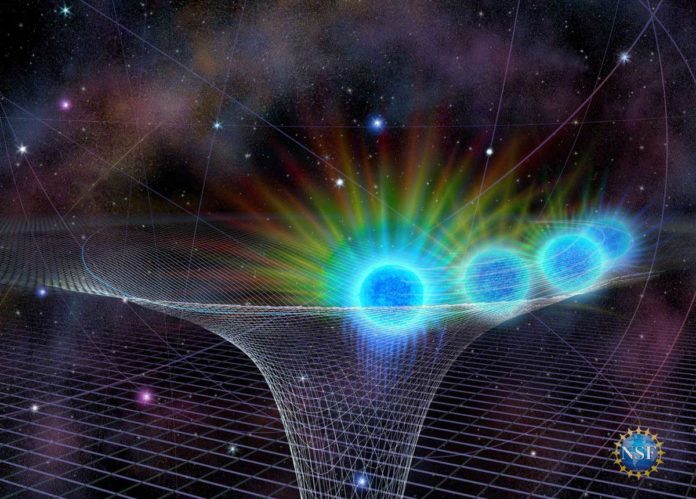The electromagnetic counterpart to the Galactic center supermassive black hole, Sgr A*, has been observed in the near-infrared for over 20 yr and is known to be highly variable. Using Keck Telescope observations, scientists recently reported that the black hole is having a curiously enormous large meal of interstellar gas and dust.
Scientists analyzed more than 13,000 observations of the black hole from 133 nights since 2003. The pictures were gathered by the W.M. Keck Observatory in Hawaii and the European Southern Observatory’s Very Large Telescope in Chile. The group reported that on May 13, the area simply outside the black hole’s “point of no turn” was much brighter.
They also observed large changes on two other nights this year; all three of those changes were ‘unprecedented.’
According to scientists, this brightness is the result of radiation from gas and dust falling into the black hole.
Mark Morris, UCLA professor of physics and astronomy said, “The big question is whether the black hole is entering a new phase—for example, if the spigot has been turned up and the rate of gas falling down the black hole ‘drain’ has increased for an extended period—or whether we have just seen the fireworks from a few unusual blobs of gas falling in.”
Andrea Ghez, UCLA professor of physics and astronomy and a co-senior author of the research said, “We want to know how black holes grow and affect the evolution of galaxies and the universe. We want to know why the supermassive hole gets brighter and how it gets brighter.”
The brightness encompassing the black hole consistently differs to some degree. However, the scientists were surprised to see the extreme variations in brightness during that time, including their observations on May 13.
UCLA research scientist Tuan Do, the study’s lead author, said, “The first image I saw that night, the black hole was so bright I initially mistook it for the star S0-2, because I had never seen Sagittarius A* that bright. However, it quickly became clear that the source had to be the black hole, which was exciting.”
Ghez said, “One hypothesis about the increased activity is that when a star called S0-2 made its closest approach to the black hole during summer 2018, it launched a large quantity of gas that reached the black hole this year. Another possibility involves a bizarre object known as G2, which is most likely a pair of binary stars, which made its closest approach to the black hole in 2014. It’s possible the black hole could have stripped off the outer layer of G2, which could help explain the increased brightness just outside the black hole.“
Morris said, “another possibility is that the brightening corresponds to the demise of large asteroids that have been drawn into the black hole.”
No Potential threat to Earth
Do say, “The black hole is some 26,000 light-years away and poses no danger to our planet. The radiation would have to be 10 billion times as bright as what the astronomers detected to affect life on Earth.”
A paper about the study, led by the UCLA Galactic Center Group, which Ghez heads, is published today in Astrophysical Journal Letters.
